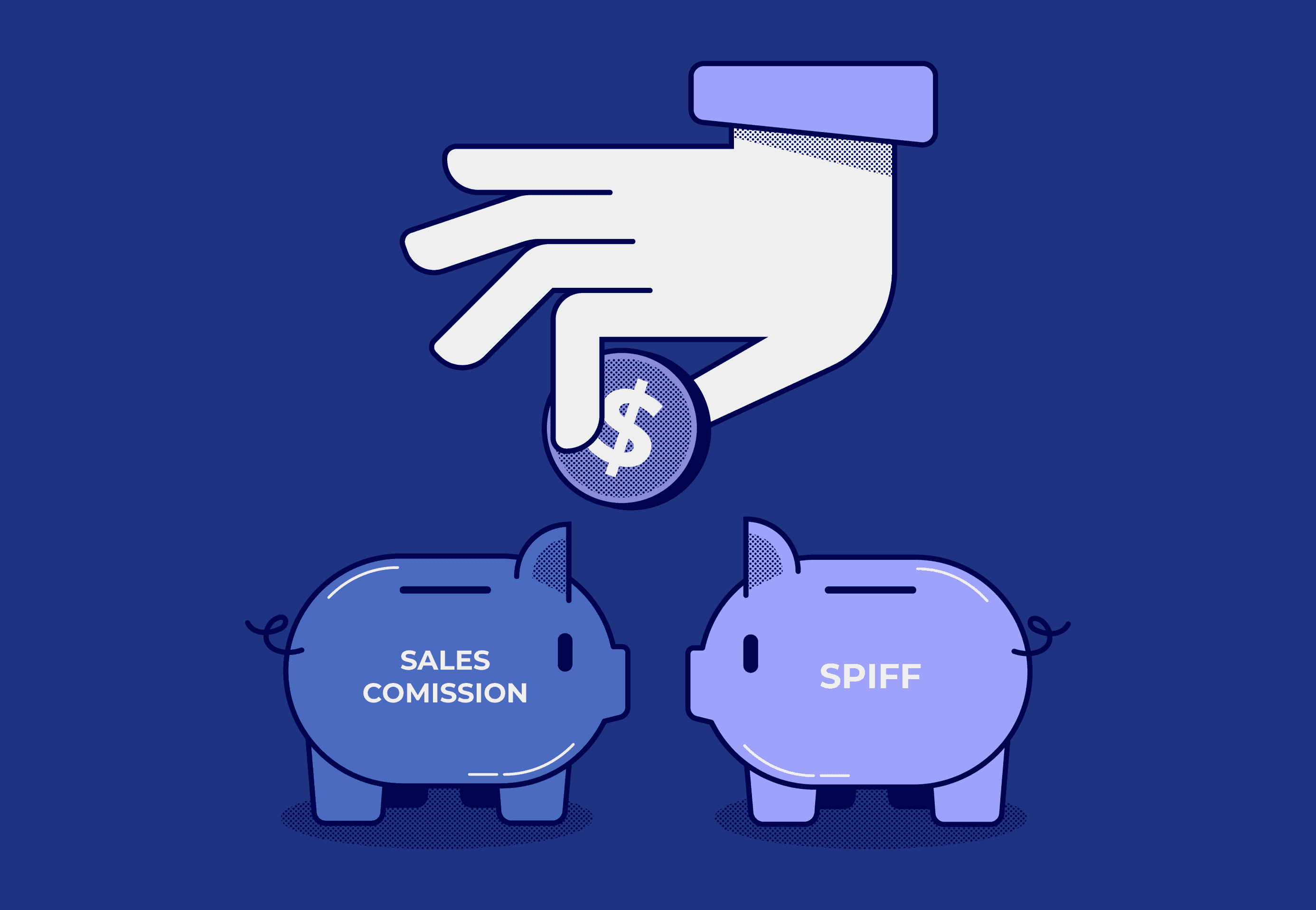How to Bid on Plumbing Jobs: The Complete Guide
Below, we've created a complete, detailed guide about how to bid plumbing jobs. You'll learn how specific plumbing jobs differ, how to calculate pricing, and using FieldPulse's simple bidding software, create pricebooks, and bid plumbing jobs in seconds.
Aug 16, 2024

If you've ever been in the position where you are bidding on a plumbing job, then you know how hard this can be. It's not easy to find the right price and estimate for any given project. So, if you're looking for a way to make life easier, then this article is for you!
How To Bid A Plumbing Job

The process for bidding plumbing jobs can range from complicated government bids to a simple verbal estimate. Because a bid is work done for free and without the guarantee of payment, it's essential for anyone running a plumbing business to understand precisely what specific clients are expecting to increase their likelihood of winning bids.
Residential Plumbing Jobs
The most common type of plumbing job is residential work. This is work done for homeowners, usually in their own homes. The process for bidding these jobs is pretty simple. The homeowner or property manager will usually request a bid through an email or phone call, and then you'll do an on-site inspection to get a better idea of what the job entails.
Service
Service calls are for small jobs that do not require a full-blown plumbing estimate. These can include fixing clogged drains in tubs and sinks, replacing faucet washers, etc. A service call does not need to be very detailed because it's usually for small jobs that should not take long to complete once the plumber gets there. Service calls are typically priced as a base bid plus an hourly rate.
For potential clients that don't require a full-fledged bid, just a letter of intent or oral bid, it's still a good idea to do a light version of this process for your own estimation's sake.
Remodel
A remodel is when a home or building has already been constructed, but the plumbing system needs to be updated or replaced. This can include updating an old shower or bathroom, replacing an entire bathroom, or adding a kitchen sink and dishwasher. The remodel bid will consist of the labor and materials needed to complete the project. It will also include any permits necessary for the job.
How To Bid Commercial Plumbing Jobs
Commercial plumbing jobs will include restaurants or apartment complexes, where water usage is both higher and more frequent. It is essential to recognize that these types of installations or renovations may require you to work shorter hours, later hours, or off-hours so the client's business can remain running. Including this accommodation in your initial bid will help the client know that you understand their needs and are the professional they want on their project. When you complete your plumbing work, you'll also be the person they call with any future projects or repairs.
How To Bid Plumbing On New Construction
This is when a new home or building is being built. The plumbing company will bid on the materials, labor, and equipment needed to complete this project.
Plumbing Government Contracts

Bidding on a government job can be a tricky process. It's not like bidding on a commercial or residential plumbing job.
The process is long, tedious and it requires you to create an entire bid package that includes the scope of work, your company's information, a price quote, and any other information they may request of you. (Pro-Tip: FieldPulse's Dynamic Proposal tool can help with this with easy-to-use pre-made templates.)
It's also very important that you have all the information you need in order to win the contract. Every city is different; some require more paperwork than others do. You also need to know if there are any restrictions on who can win the contract or if bids will be opened up to contractors from all over the country instead of just your local area.
Invitation To Bid vs. Request For Proposal
When you bid on a government contract, the first step is to submit your Invitation To Bid (ITB) or answer a Request For Proposal. This is a request for information from a government agency to decide which company is most qualified to receive a contract.
Invitation To Bid
An invitation to bid, or ITB, is a notice that a government agency will be awarding a plumbing contract to a company. The ITB will outline the contract's specifications, such as the work to be done, materials to be used, and other conditions. The ITB must be opened by a specific time and date, and all bids must be received by that time.
In general, a client seeking an invitation to bid plumbing bobs will be looking for a fixed-price contract with your business, though you are welcome to (and should) bake in some price adjustment based on the variables that can occur on the job site.
Request for Proposals
Similar to the ITB is the Request for Proposals or RFP.
A Request For Proposal (RFP) is similar to an ITB, except it is used when the government agency is unsure what they want; they are looking for ideas from contractors who may have experience with similar projects. An RFP usually has very little information about what the job will entail but does contain general details about how big a project will be and where it will take place. The contractor then submits their bid to complete the project in accordance with their design, which must fall within budget parameters set by the government agency.
Therefore, one outcome of an RFP is a cost-reimbursable contract. It's one of the few times that a client expects wiggle room in the pricing, materials, and scope.
The ITB, on the other hand, will usually result in a fixed-price deal, even if it contains options like price adjustment to account for inevitable holdups and variables.
How To Price A Plumbing Job
Plumbing professionals have a lot to consider when pricing a plumbing service . While it seems like a simple equation at first glance, 'Price your service higher than it costs,' it will quickly become apparent that there are hidden expenses to the plumbing industry. You want to guarantee that your profit margin isn't coming at the cost of potential clients. Here are the main methods of pricing plumbing jobs and some of their benefits and drawbacks.
How To Price Plumbing Services Hourly

When you start bidding plumbing jobs, it's tempting to focus on simplicity. An hourly rate can work for everyday jobs and keep your paperwork easy. To calculate an hourly price, you'll need to determine a) what you expect to spend on running the business, then b) how much money you want to make manually. An added benefit to individuals working in the plumbing business is that you can also determine if there's c) profit to be made on top of your salary. Add those three together and divide by d) the number of billable hours you expect to work. Once you have that number, compare it to some of the competing plumbing services in your area. Make any further adjustments that you feel comfortable with, and there you have it! Your hourly rate.
However, it is essential to note that if a job becomes more complicated while you're doing that work, you can face unexpected additional expenses that mean now you'll be lucky just to cover cleanup costs. Additionally, even if all goes according to plan, your customer can be left unsatisfied with their bill simply because they don't fully understand that your hourly rate covers work on the job site as well as in the office. If your customer isn't happy with the price they paid for your plumbing service, then you can say goodbye to any more plumbing jobs from them, as well as their friends and family.
How To Price A Flat-Rate Plumbing Job
With flat-rate pricing , customers are more likely to book jobs in advance because they know how much the service will cost them before the work begins. This can help you fill your schedule and make sure that you are making enough money from each job to cover your business costs and profit. This can be great for small jobs but can quickly eat into your profit with larger jobs that have dozens of considerations to factor in.
How To Price Per Square Foot

Pricing per square foot is common for large jobs or plumbing jobs for new construction. It is a great way to cover overhead costs without having the difficulty of meeting client expectations that an hourly rate sometimes incurs. You should check to see what median prices are within your area; some areas of the country will have higher averages though the national average is around $4.50 per square foot.
Before determining what you're going to charge, it is essential to measure the project in question accurately. You'll also want to know the number of fixtures that you'll be installing, as well as what piping material is being used. These will all affect your cost and should be added to your bid to ensure your profit margin stays where you want it.
Plumbing calculators and other plumbing apps can help a lot when pricing jobs!
How Much To Charge For Plumbing Work
The total cost of a plumbing job is the sum of the materials, labor, and overhead costs. The contractor's markup determines the materials cost. A plumber's hourly rate determines the labor cost. Both materials and labor are also typically priced to account for overhead.
There are a lot of factors that go into determining your cost, so we'll break them down for you.
Labor

How much time will it take to complete the job? We recommend adding 20-30% to this number to cover breaks, distractions, and unexpected issues during any project.
This is one of the most critical factors in determining your bid. If your labor rate is too low, you may not be competitive with the other plumbers in your area. You may not win the job if it's too high because your price will be too high for the customer to justify. It would help if you found a happy medium between these two extremes, so talk to people in your area and see what they're charging for similar work. Remember, it's always easier to charge more than reduce a bid after the project starts!
Crew & Staffing
Next, you're thinking about whether you'll need a crew to complete the job. Based on the designs and parameters of the bid, you'll need to price out per head on the job site. Then, add a little extra on top, so you make a profit and account for unexpected circumstances.
This can get pricey fast if you don't have a clear idea of what the job entails from the client. How many master plumbers do you need supervising apprentices or helpers? How much is that going to cost per head per hour?
You need an overall plumbing hourly rate for every member of your crew at each skill level (which you can amalgamate into an aggregate rate if you want).
These are knowable criteria but need to be factored in in advance so you can maximize profit and not take a bath on unexpected expenses – or irritate your client with overruns.
Supplies & Materials
This is where it gets tricky. For example, let's say you're replacing a garbage disposal in a kitchen sink. You can purchase the new disposal for $150 or spend $250 on a nicer unit with all the bells and whistles. The better unit will probably last longer and perform better, but is it worth an extra $100 to your customer? You have to decide what your customers are willing to pay and what you can afford to spend on all the materials.
Ask your customer what they're looking for in terms of design/look. If they're looking for something modern and minimal, this will affect your pricing. Modern interiors typically require more work than traditional interiors, so that's something to consider before quoting a price.
Material costs will also vary greatly depending on the type of construction (new or an existing structure) and what the client is looking for. Is it a high-end construction with all the bells and whistles or more of a penny-saver?
Will they be looking to you to use the best materials or help them decide which materials fall within their budget?
Will the materials the client wants you to use incur additional expenses, like the use of special tools and/or expertise to install?
These minor variables add up to additional costs if you don't have the answers upfront – and know which questions to ask when you bid on plumbing jobs.
Complete Estimates Faster With A Pricebook

Want to get through estimates faster? Create a digital pricebook . A pricebook is a spreadsheet
of products and services that can be consulted as you fill out estimates. With FieldPulse's plumbing estimation software , you can create or upload your pricebook directly inside the app. Then, you can bundle products and services for common jobs to create detailed estimates on the spot in seconds. Or alternatively, with the pricebook feature you can create detailed pricebooks with photos, item descriptions, and more.
Overhead
Overhead consists of your basic business expenses: truck fuel, phone/internet/fax expense, insurance premiums, etc. Don't forget about taxes either! You'll likely pay around 30% of each dollar you make in taxes (federal and state), so factor that into your pricing as well.
Here are some of the things you should be asking:
Job Site Expenses
In some ways, despite the surprises that can occur in materials needs or labor, those parts are easy. What's occasionally harder to remember are all the side expenses you might have to account for at a busy job site. Below, we've listed out a few of the additional costs you might need to account for on larger jobs.
Plumbing. While many big job sites simply rely on port-a-johns, others will have temporary toilets installed for the crew working there. Are you expected to get these online or build them?
Temporary Pipe Runs. Speaking of temporary installation, you may need to do temporary pipe runs or water boosting for other on-site work. This may or may not be accounted for in the existing planning documents and at least raises a question you can ask the client.
Accommodation. If the project is big enough, do you need to rent a trailer to have adequate organizing and office space? If not, will the client provide one for you and your crew? Logistics are critical to big projects, and you need a place to run them from.
Parking. Is there free parking nearby? Do you need to pay for space? What about truck rentals for the job site?
Waste Management. Will the job site provide roll-off dumpsters, or will you be required to provide an on-site dumpster?
Local Regulations. What are the costs of permits and licenses you might need? What are the costs of taxes on work and materials? What kind of safety training is required?
Mark-Ups
Markups are the difference between what you pay for a product or service and what you charge the customer. The markup is a percentage of the total cost of everything that goes into that job. For example, if you have a job that costs you $2,000 and your markup is 30%, you would charge $2,600.
Pro-Tip: Mark-ups don't need to be consistent from job-to-job or customer-to-customer. You can choose what markups will work best for your business. For example: if a customer needs something fixed right away and doesn't care about price, your markup percentage could increase because they're willing to pay more.
The timeline can be a significant factor depending on what you're doing. If you're doing an emergency repair, it will mean you're working outside of your regular hours or might need to prioritize that customer over other work.
Alternatively, if you're doing work for a commercial job, you'll likely need to work outside of business hours or on a tighter timeline. That means you're able to charge more for this work.
The Magic 3 Percent
Once you've got your best, most comprehensive guess at a bid together, contact all your contractors and obtain estimates for your estimates, add three percent on top. This is your wiggle room to preserve profit in the face of unexpected costs and changes.
In addition to simply being the average margin of error on plumbing contractor estimates, it's a good percentage that takes care of your needs as a professional while not being so high as to seem like you're gouging the client. Everybody wins.
Plumbing Business Bidding Software

Supercharge your sales, streamline your bidding process, and increase revenue with FieldPulse's plumbing business software , complete with a complete suite of tools to help you manage your business.
Plumbing contractors can use this software to quickly create estimates and detailed proposals with case studies, multiple pricing options, reviews, and more.
The app also provides numerous sales tools to help you price and upsell jobs with ease, including pricebooks, markups, and dynamic estimates with good, better, best pricing so that you can offer customers numerous options.
Want to learn about FieldPulse's full suite of features - including scheduling, inventory, and automated customer communications - inside FieldPulse's plumbing software? Book a demo today to explore FieldPulse at your own pace.


